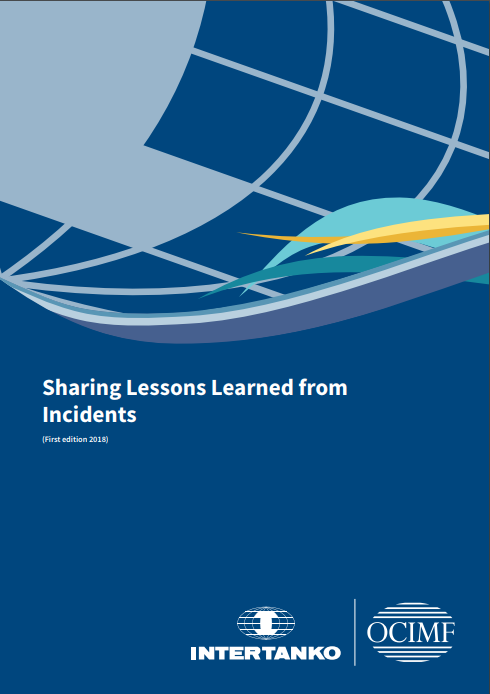OCIMF released the information paper ‘Sharing Lessons Learned from Incidents’ that encourages vessel operators to use three different levels of sharing the lessons learned from incidents. The objective focuses on acknowledging the important content of the lessons, the audience of those messages and the processes to be changed and the revised expectations on safety.
OCIMF noted that it is important to assemble a clear and specific set of guidelines, to be used globally, that operators could follow in order to share the lessons that these programmes expose.
Namely, the three levels of sharing the lessons learned are:
#1 The Immediate incident notification and interim update level that should contain:
- An incident description to state the type of the incident, and a brief description of what happened, using only the facts known at the time and the use of available photographs.
- The immediate action to be taken by the staff, such as additional checks, suspend certain activities, stop using particular equipment on board, raise awareness through safety meetings.
- A feedback loop, meaning to ask for confirmation that fleet staff have received and discussed the report, and that they have taken the necessary action.
In the case any extra facts emerge, they are to be published as ‘interim update’, using the same notification template.
#2 The Lessons learned from an incident investigation level that aims to identify any weaknesses and gaps in existing procedures and arrangements, and to find steps to improve them, show examples of good practice in existing procedures and encourage a proactive approach among staff to safety on board and ashore. This would include identifying hazards and taking measures to prevent any repeat of the incident
This level of sharing lessons should contain:
- An Incident Report to provide a summary of the incident and the key issues related to it and add available photographs.
- The potential outcome that will focus on the ‘top event’, meaning the specific moment when control can be lost in case of challenges and could lead to risk exposure. The aim is to define the worst-case scenario and set a plan to avoid it.
- The causes that are divided to the immediate causes which are the conditions that led directly to the incident and the root causes which have to do with the initial events or failings that resulted to the incident.
- A feedback loop meaning to ask staff to reassure that they have received and discussed the report. Also, ask for for confirmation that they have taken the required action.
In this level, steps should be explained to remedy the effect of the incident and the actions needed to prevent it from occurring again. The staff should be encouraged and supported to discuss in order to have fruitful results while investigating. Moreover, depending on the incident it is either sent to all staff or tailored to the relevant groups. The goal is to reinforce already existent procedures and to identify any extra actions that might help to prevent a repeat incident.
#3 The Lessons learned from a review of incident trends level that should contain:
- A summary of the trend by giving a brief description of the incident and categorising the trend as incident types, root causes and contributory factors. In the summary available photographs should be provided.
- A list of common causes.
- A summary of the lessons identified and documented by the original incident investigations.
- Raise awareness of the trend among crews, staff ashore and contractors in safety meetings and safety stand-downs.
- A description of the steps that they should take to help reverse the trend.
- The use of a feedback loop meaning to ask staff to reassure that they have received and discussed the report. Also, ask for for confirmation that they have taken the required action.
This level should be used after a review or analysis that has reported industry-wide incidents as trend in a particular area. Depending on the trend and the key lessons, either send it to all staff or tailor it to the relevant groups.
For more information see the PDF below:































































